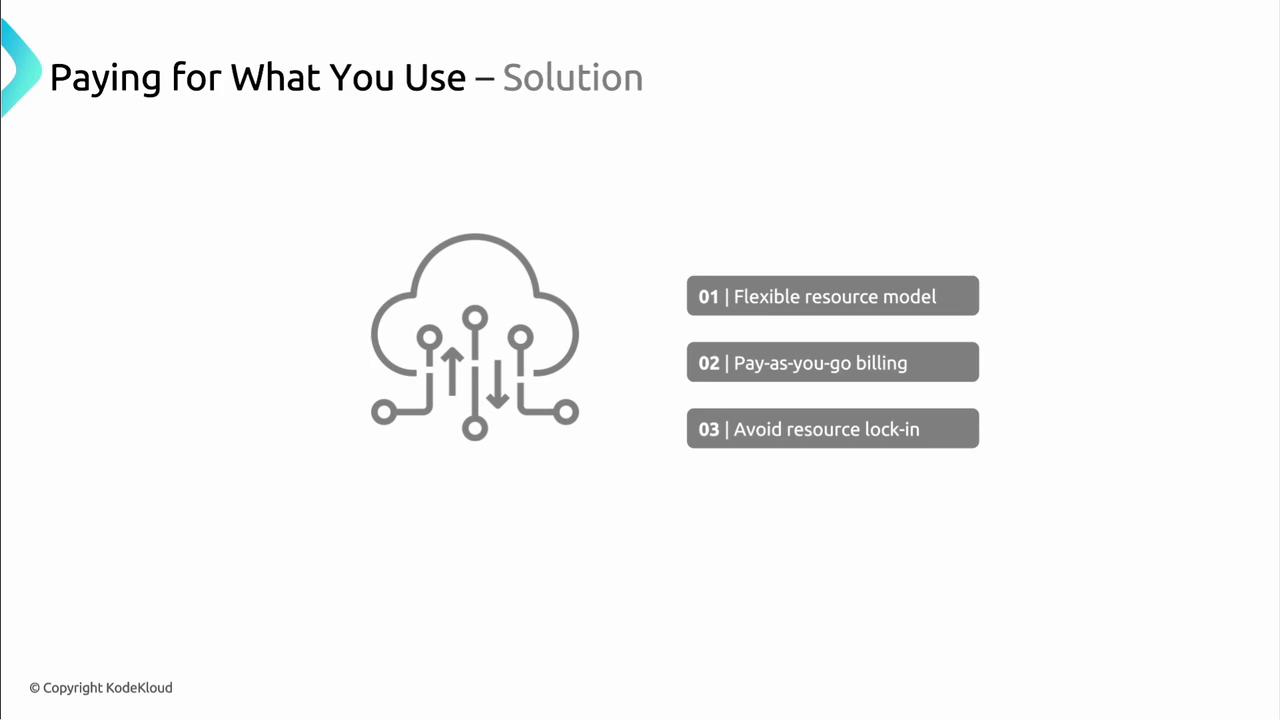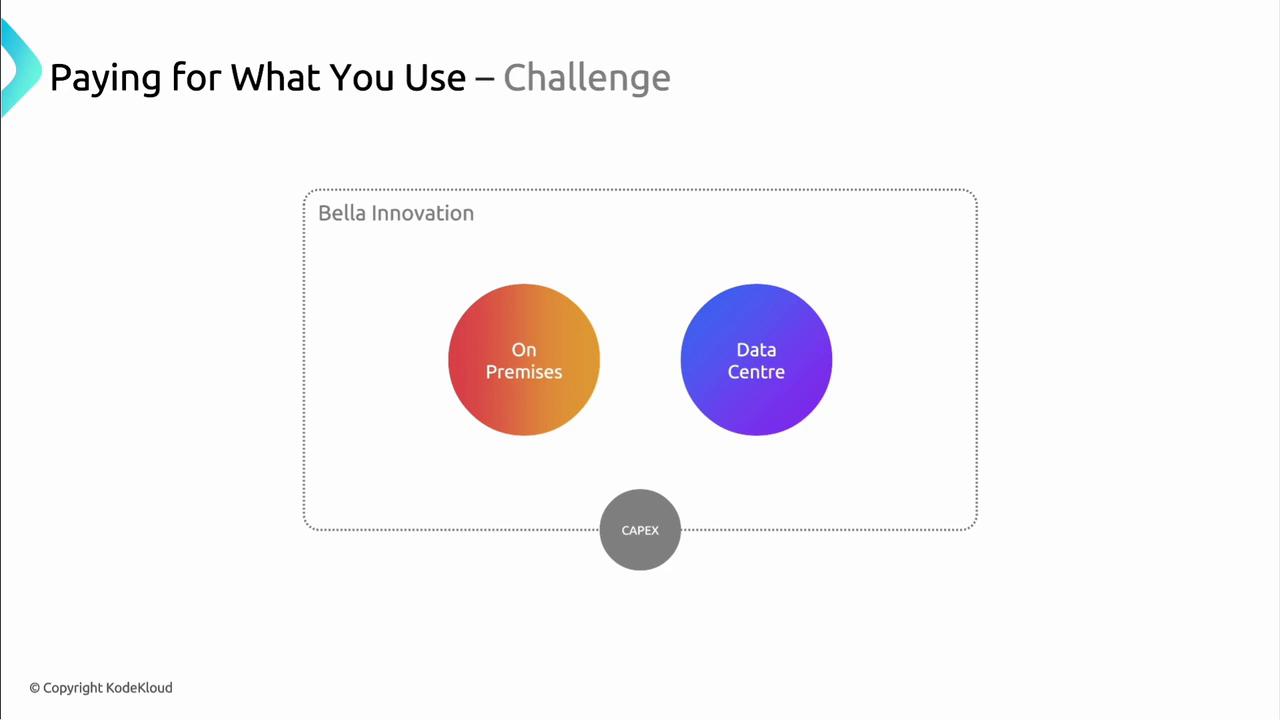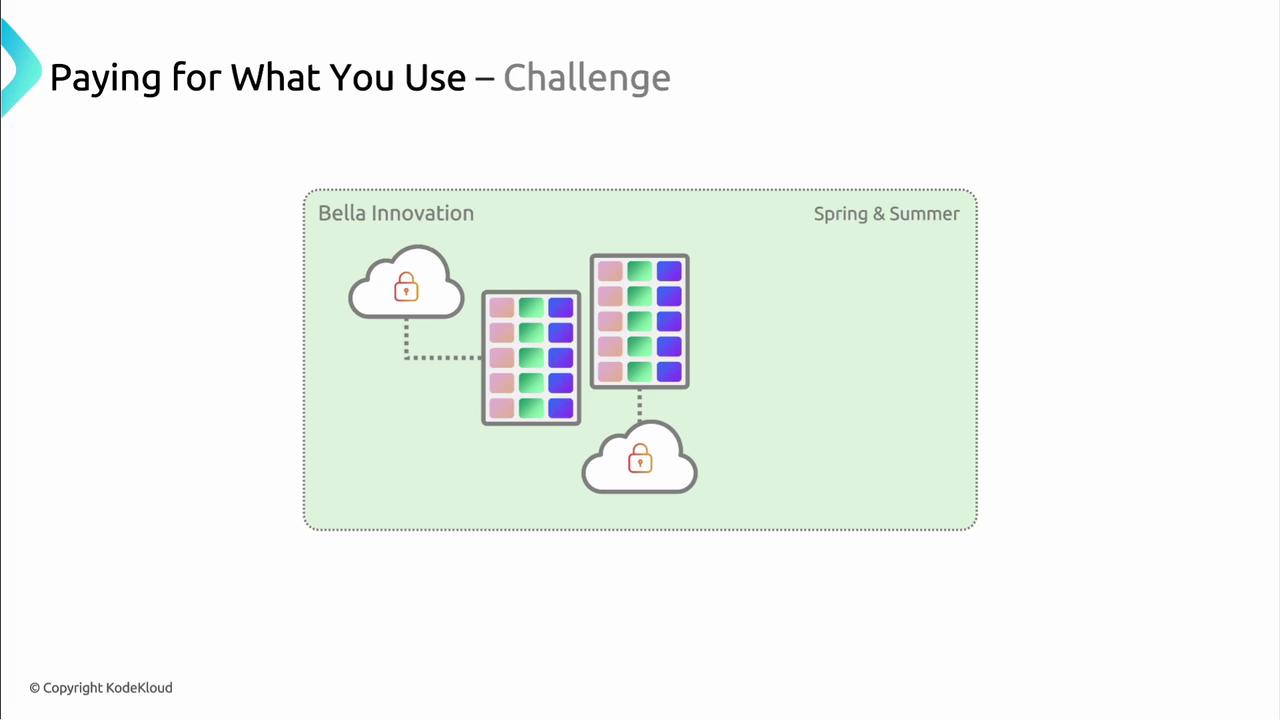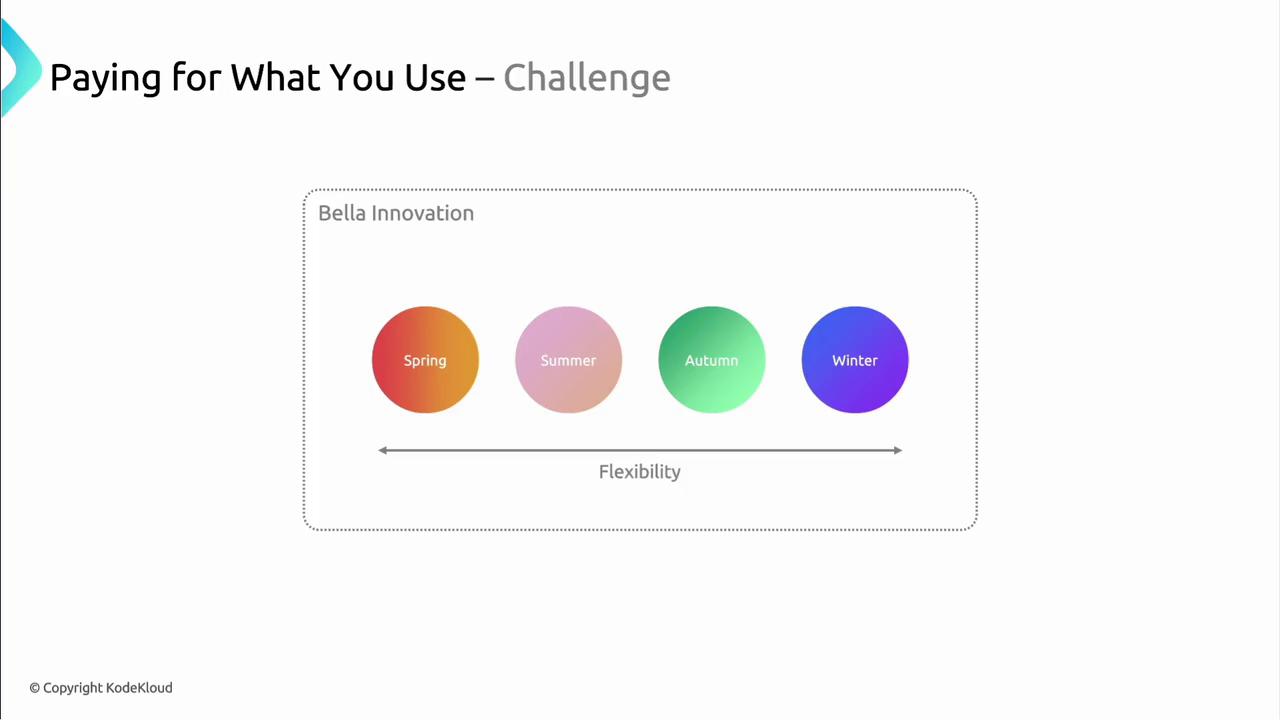AZ900: Microsoft Azure Fundamentals
Cloud Computing
Consumption Based Model
Consumption-based models provide a flexible and cost-effective solution for digital services. Companies like Bella Innovation face significant challenges in managing resources while balancing user demand and operational costs.
During the summer and spring seasons, the organization experiences a surge in user requests. Servers must handle unpredictable traffic, which necessitates rapid resource scaling. Conversely, in autumn and winter, the lower demand often results in over-provisioned resources and unnecessary expenditures.
Embracing a consumption-based model through cloud services offers a game-changing solution in the world of cloud computing. This approach is built on a flexible, pay-for-what-you-use billing system, meaning that users incur costs only for the resources they consume.

Key Insight
With pay-as-you-go billing, organizations avoid the pitfalls of traditional on-premises infrastructure, where high capital expenditures (CAPEX) for data centers often lead to wasted resources.
Traditionally, Bella Innovation relied on on-premises infrastructure, involving significant capital outlays for servers that could not be easily repurposed. This often led to unused capacity and inefficiencies when user demand decreased.

By shifting to a cloud-based approach, the company can dynamically scale its resources—deploying additional servers during peak seasons like spring and summer and decommissioning them during autumn and winter to save on costs.

This flexible model allows Bella Innovation to match resource allocation precisely with demand, enabling accurate cost prediction and billing based on actual usage. This eliminates the waste associated with over-provisioning and ensures that the company only pays for the extra computing power when it is needed.

Operational Efficiency
By transitioning to a consumption-based model, businesses not only reduce costs but also significantly enhance operational efficiency. This model provides scalability and billing precision that traditional infrastructures cannot match.
Major cloud providers such as Microsoft Azure, Amazon Web Services, and Google Cloud follow the pay-as-you-go model. For example, if 10 servers are deployed for 10 hours, the billing only reflects that period. Should the workload decrease—say, removing five servers—charges will consequently drop to reflect only the active resources.
This model is especially beneficial for startups. New ventures can build and deploy their websites on the cloud without requiring significant upfront investments. In scenarios where the startup needs to scale down or shut down, the company pays strictly for its actual resource usage, making the cloud an ideal environment for agile business growth.
Now that you understand the consumption-based pricing model and its advantages—such as enhanced cost prediction and scalability—explore more about the benefits of cloud computing to discover how it can further transform your business operations.
Watch Video
Watch video content